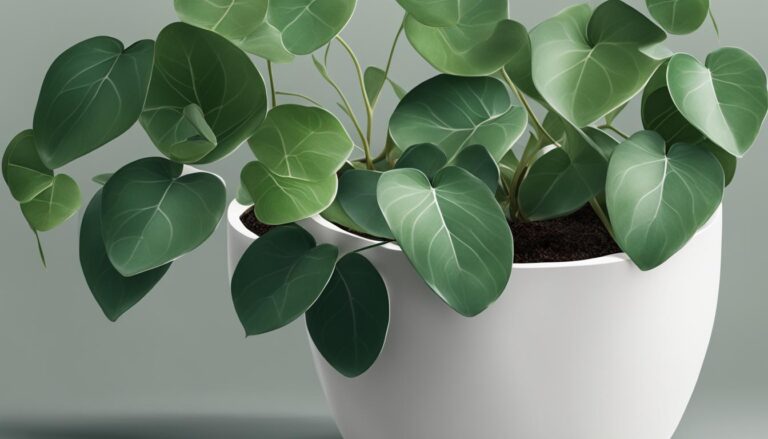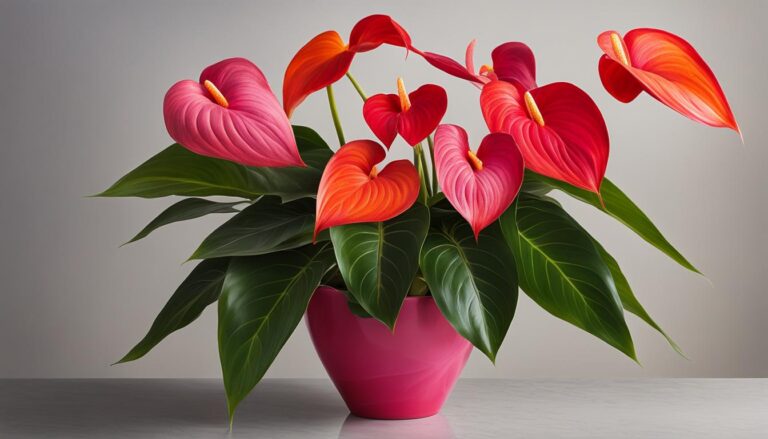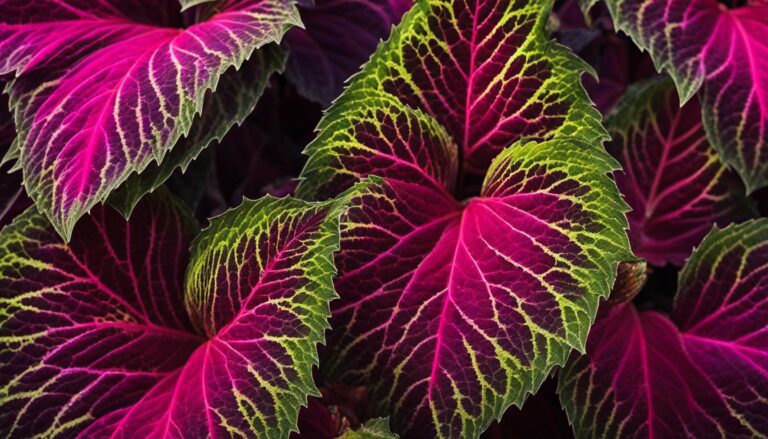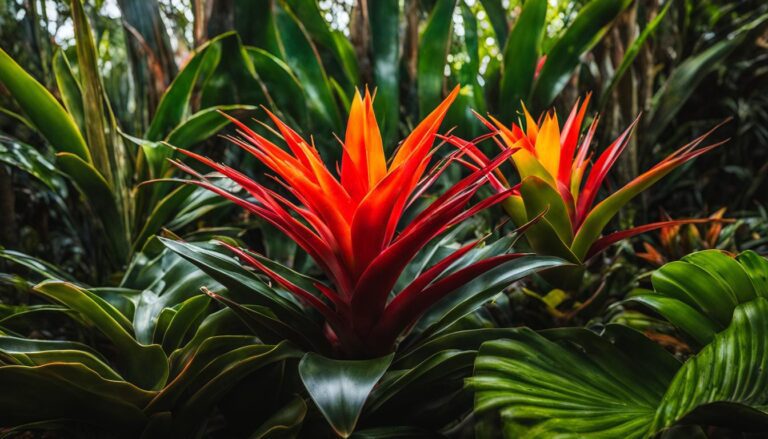
Ferns have gained popularity in recent years for their beauty and versatility. There are many different types of ferns, each with its own unique characteristics and care requirements.
In this article, we will delve into the world of ferns and explore the various types that are commonly found in gardens and indoor spaces.
Key Takeaways
- There are many different types of ferns, each with its own unique characteristics.
- Ferns are popular for their beauty and versatility.
- Some common types of ferns include the ostrich fern, macho fern, and lemon butter fern.
- Ferns can be grown both indoors and outdoors, depending on the variety.
- Ferns require proper care and attention to thrive.
Ostrich Fern (Matteuccia struthiopteris)
The ostrich fern, also known as Matteuccia struthiopteris, is a tall and stately fern that is native to North America. It is characterized by its large, feathery fronds that resemble the plumes of an ostrich. Ostrich ferns thrive in wet, shady environments and can reach heights of 4 to 6 feet. They are a popular choice for wetland gardens and are often used to control erosion.
With their striking appearance and ability to tolerate moist conditions, ostrich ferns add a touch of elegance to any landscape. Their dramatic fronds create a lush and tropical feel, making them a stunning focal point in gardens or along pathways.
These ferns also have a unique reproductive strategy, as they produce spore-bearing structures called sporangia on the underside of their fronds.
Ostrich ferns are known for their resilience and adaptability. They can withstand cold winters and are one of the first ferns to emerge in the spring, adding a burst of green to the landscape.
Whether planted in a garden or grown in containers, ostrich ferns require regular watering and thrive in moist soil. They prefer partial to full shade and should be protected from direct sunlight, as it can scorch their delicate fronds.
With proper care and maintenance, ostrich ferns can thrive for many years, bringing beauty and grace to any outdoor space.
| Characteristics of Ostrich Fern | Care Requirements |
|---|---|
| Large, feathery fronds | Regular watering |
| Native to North America | Moist, well-drained soil |
| Thrives in wet, shady environments | Partial to full shade |
| Can reach heights of 4 to 6 feet | Protect from direct sunlight |
| Used to control erosion | Regular fertilization |
Macho Fern (Nephrolepis biserrata)
The Macho Fern, scientifically known as Nephrolepis biserrata, is a robust and bold fern variety that adds a dramatic touch to any garden or indoor space. With its large, bright green fronds that can grow up to 4 feet long, this fern creates a striking visual impact.
The Macho Fern is native to Florida and is well-suited for hot and humid climates. It thrives in partial to full shade and requires consistent moisture to thrive.
One of the key features of the Macho Fern is its resilience and adaptability. It can tolerate a wide range of growing conditions, making it a versatile choice for both beginner and experienced gardeners.
Whether you want to add a touch of greenery to your outdoor landscape or enhance the aesthetics of your indoor space, the Macho Fern is an excellent choice.
When growing the Macho Fern indoors, it is important to provide it with the right conditions for optimal growth. This includes placing it in a location with bright, indirect light and ensuring that the soil is consistently moist. Additionally, misting the fronds regularly helps to create the high humidity that the Macho Fern thrives in.
Benefits of the Macho Fern:
- Creates a bold and dramatic visual impact
- Tolerant of a wide range of growing conditions
- Thrives in hot and humid climates
- Adaptable to both indoor and outdoor environments
With its impressive size and striking appearance, the Macho Fern is a popular choice for those looking to make a statement with their greenery. Whether used as a focal point in a garden or as a standalone plant in a room, the Macho Fern is sure to captivate with its bold and beautiful fronds.
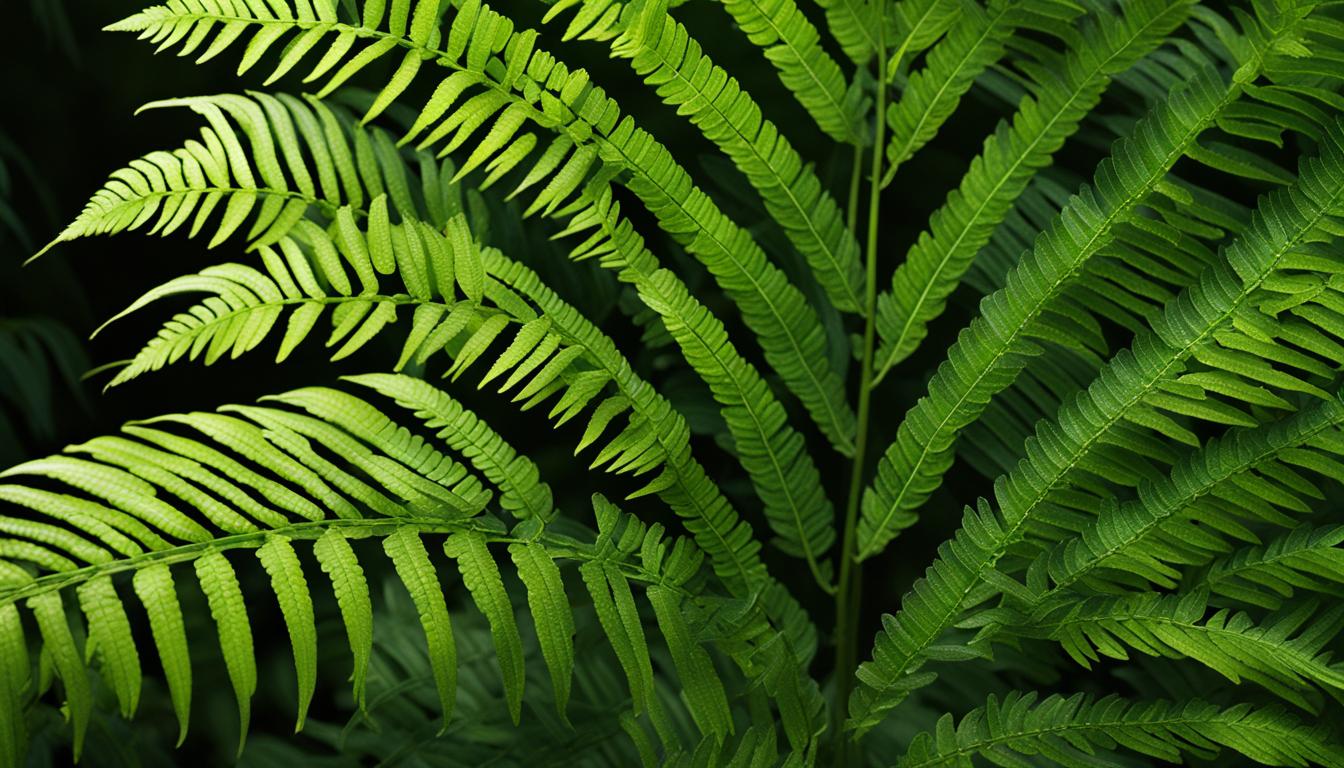
| Characteristics | Care Requirements |
|---|---|
| Large, bright green fronds | Requires partial to full shade |
| Can grow up to 4 feet long | Requires consistent moisture |
| Native to Florida | Tolerant of a wide range of conditions |
Lemon Butter Fern (Nephrolepis cordifolia ‘Duffii’)
I’m excited to introduce you to the Lemon Butter Fern, scientifically known as Nephrolepis cordifolia ‘Duffii’. This compact and resilient fern variety is a favorite among indoor plant enthusiasts due to its unique characteristics and adaptability.
The Lemon Butter Fern features bright green fronds that emit a delightful lemony scent, adding a refreshing touch to any space. Its compact size, reaching up to 12 inches tall, makes it perfect for small indoor areas such as shelves, desks, or windowsills.
When it comes to care, the Lemon Butter Fern thrives in partial to full shade and requires consistent moisture to flourish. Regular watering and ensuring the soil remains evenly moist will keep this fern happy and healthy. With its ability to tolerate lower light levels, it can also thrive in areas with indirect sunlight.
Growing Tips for Lemon Butter Fern
- Place the Lemon Butter Fern in a location with partial to full shade.
- Water the fern regularly, keeping the soil evenly moist.
- Provide high humidity by misting the fronds or placing a tray of water nearby.
- Ensure proper drainage to prevent waterlogged roots.
- Fertilize the fern with a balanced houseplant fertilizer every two to four weeks during the growing season.
With its compact size and lovely lemon scent, the Lemon Butter Fern is a delightful addition to any indoor plant collection. Its vibrant green fronds and ease of care make it a perfect choice for both beginner and experienced plant lovers alike.
| Common Name | Scientific Name | Size | Light Requirement | Watering Needs |
|---|---|---|---|---|
| Lemon Butter Fern | Nephrolepis cordifolia ‘Duffii’ | Up to 12 inches tall | Partial to full shade | Consistent moisture |
Western Sword Fern (Polystichum munitum)
The western sword fern, scientifically known as Polystichum munitum, is a versatile and evergreen fern that is native to North America. This fern is widely recognized for its long and lush fronds, which resemble blades and can grow up to 4 feet in height. It is a popular choice for shady spots in woodland gardens, where it adds a touch of elegance and greenery.
The western sword fern is highly adaptable and can thrive in various environmental conditions. It is resistant to pests and diseases, making it relatively low-maintenance for gardeners.
This fern species prefers moist soils and partial to full shade, but it can tolerate drier conditions once established. It is also known to be frost-tolerant, adding year-round interest to gardens even in colder climates.
With its attractive foliage and hardiness, the western sword fern is frequently used for landscaping and horticultural purposes. It adds a natural and textured element to outdoor spaces, providing a visually pleasing backdrop for other plants and flowers.
This fern species is also commonly utilized in floral arrangements and indoor gardening, bringing a touch of nature and tranquility to interior spaces.
In summary, the western sword fern, or Polystichum munitum, is a versatile and adaptable fern species that adds beauty and charm to garden spaces. With its long and lush fronds, it creates a striking visual impact and thrives in shady conditions. Whether used in outdoor gardens or indoor settings, the western sword fern is a popular choice for its resilience and aesthetic appeal.
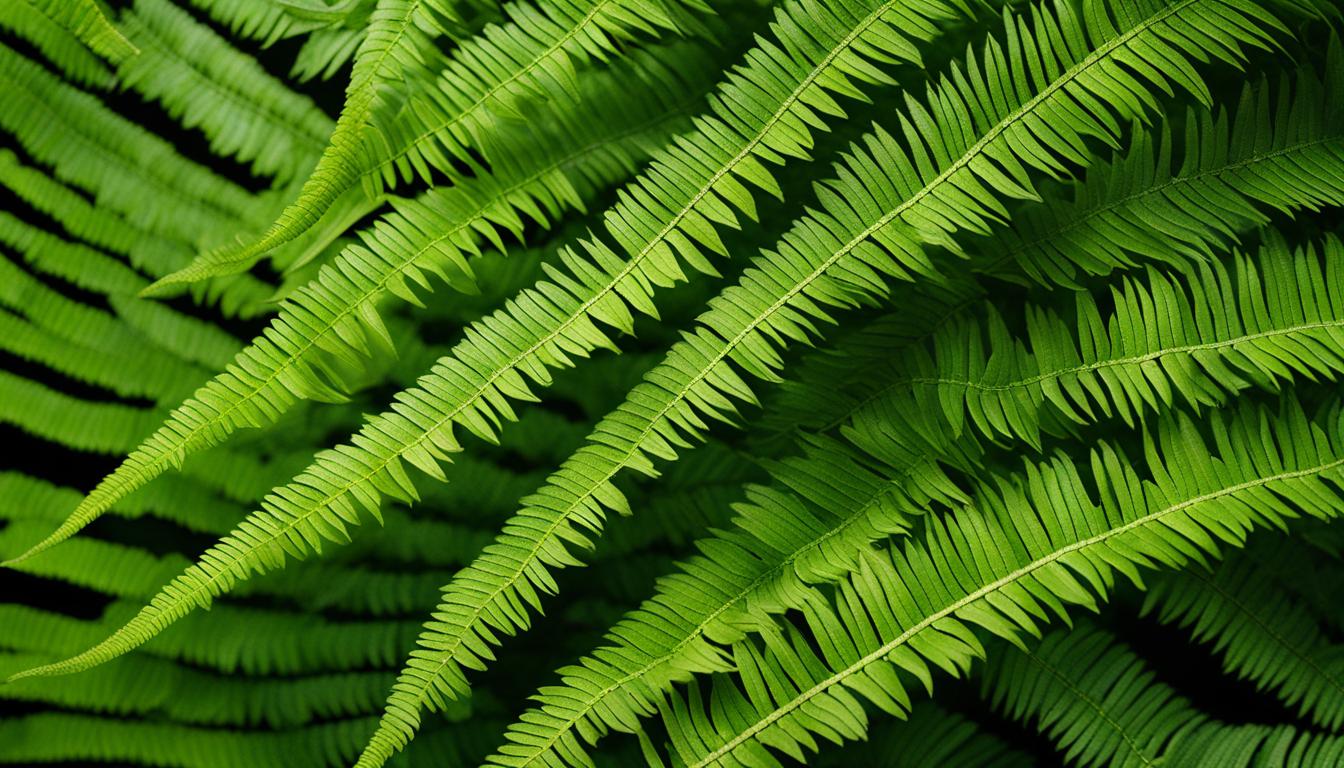
| Key Features | Care Requirements |
|---|---|
| Long and lush fronds resembling blades | Requires moist soil |
| Adaptable to various environmental conditions | Thrives in partial to full shade |
| Resistant to pests and diseases | Tolerates drier conditions once established |
| Provides year-round interest in gardens | Frost-tolerant |
Autumn Fern (Dryopteris erythrosora)
When it comes to adding a touch of vibrant color to your garden or indoor space, the Autumn Fern (Dryopteris erythrosora) is a perfect choice.
This deciduous fern is known for its stunning coppery-red fronds, which emerge in the spring and gradually transition to a deep green hue as they mature. With its unique coloration and year-round interest, the Autumn Fern is a popular option among fern enthusiasts.
The Autumn Fern is well-suited for small spaces and can reach heights of up to 24 inches. It thrives in full shade, making it an excellent choice for areas with limited sunlight.
To ensure its optimal growth, the Autumn Fern requires consistent moisture and well-draining soil. Regular watering and mulching can help retain the necessary moisture levels and promote healthy growth.
With its striking foliage and adaptability to various environments, the Autumn Fern is a versatile addition to any garden or indoor space. Whether planted in a shaded corner of your backyard or placed in a decorative pot indoors, this fern is sure to add a touch of natural beauty and charm to your surroundings.
Key Features of the Autumn Fern
- Deciduous fern with coppery-red fronds in spring
- Fronds transition to deep green as they mature
- Height: Up to 24 inches
- Ideal for small spaces
- Thrives in full shade
- Requires consistent moisture and well-draining soil
Comparison of Fern Types
| Fern Type | Main Features | Growth Height | Light Requirement | Moisture Needs |
|---|---|---|---|---|
| Ostrich Fern | Tall and stately with feathery fronds | 4-6 feet | Shade | Moist |
| Macho Fern | Robust and bold with large fronds | Up to 4 feet | Partial to full shade | Moist |
| Lemon Butter Fern | Compact and resilient with lemon-scented fronds | Up to 12 inches | Partial to full shade | Moist |
| Western Sword Fern | Versatile and evergreen with lush fronds | Up to 4 feet | Shade | Moist |
| Lady Fern | Elegant and fast-growing with lacy fronds | Up to 3 feet | Partial to full shade | Moist |
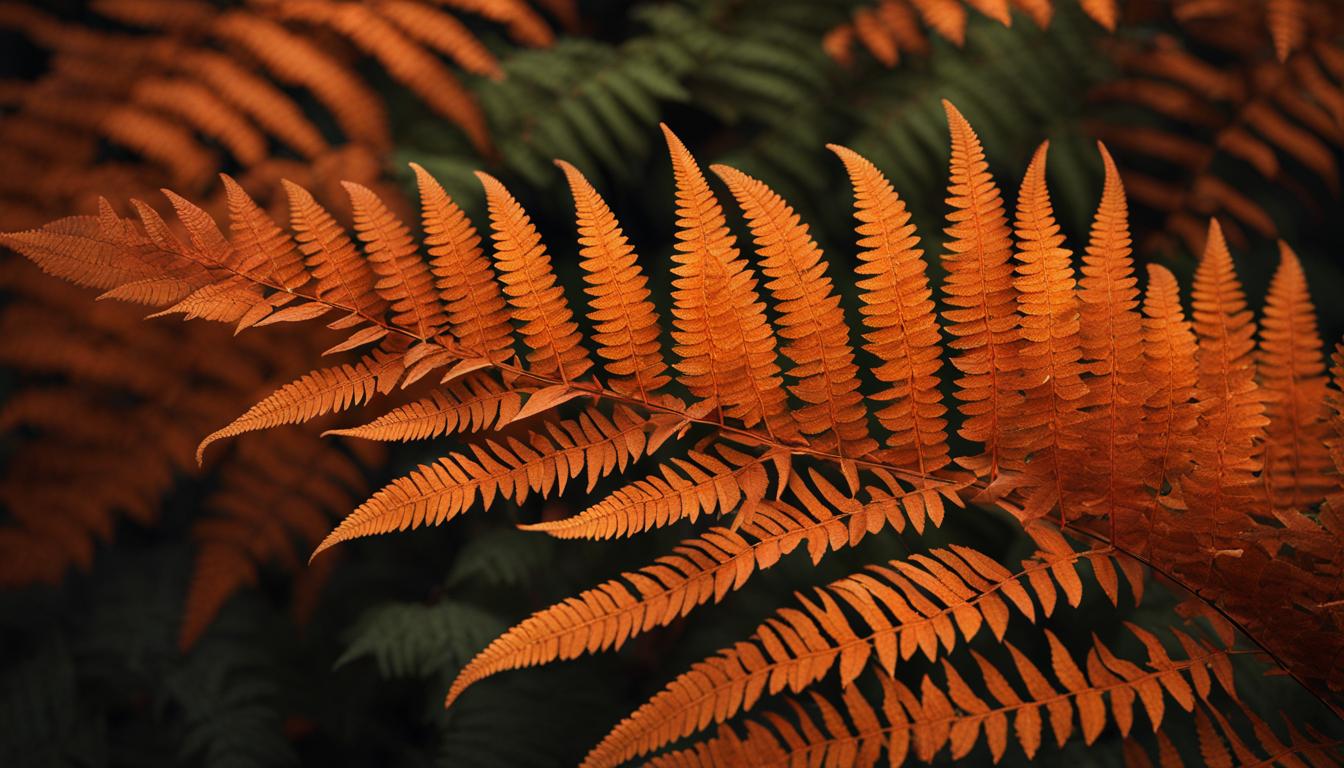
Lady Fern (Athyrium filix-femina)
The lady fern, or Athyrium filix-femina, is an elegant and fast-growing fern that adds a touch of grace to any garden or indoor space. With its lacy fronds and adaptability, this fern has become a popular choice among gardeners.
Native to North America, the lady fern can reach heights of up to 3 feet and thrives in partial to full shade. Its delicate foliage creates a beautiful contrast against other plants and adds a sense of tranquility to any landscape.
One of the reasons why the lady fern is so beloved by gardeners is its versatility. It can thrive in a variety of conditions, including damp and shady areas. This makes it an excellent choice for woodland gardens, where it can add a touch of elegance to the undergrowth.
When it comes to care, the lady fern is relatively low-maintenance. It requires regular watering to keep the soil consistently moist and benefits from occasional fertilization during the growing season. With the proper care, the lady fern will reward you with its delicate beauty year after year.
Japanese Painted Fern (Athyrium niponicum)
The Japanese painted fern, scientifically known as Athyrium niponicum, is a striking and unique fern variety. It is characterized by its silvery fronds that have a frosted appearance.
Japanese painted ferns are well-suited for shady spots and can reach heights of up to 18 inches. They require consistent moisture and mild winters to thrive.
These ferns are a favorite among gardeners for their eye-catching foliage. The silvery fronds add a touch of elegance and contrast to any garden or indoor space. They are often used as accent plants in shady borders or planted in mass for a stunning display.
I fell in love with the Japanese painted fern the moment I saw its silvery fronds shimmering in the shade. Its unique coloration adds a touch of magic to my garden, creating a serene and ethereal ambiance. Whether paired with vibrant blooms or used as a standalone focal point, this fern never fails to captivate and delight.
When it comes to care, Japanese painted ferns are relatively low-maintenance. They prefer moist, well-drained soil and thrive in partial to full shade. It’s important to keep the soil consistently moist, especially during hot summer months. Mulching around the base of the fern can help retain moisture and regulate soil temperature.
| Attributes | Details |
|---|---|
| Scientific Name | Athyrium niponicum |
| Common Name | Japanese Painted Fern |
| Height | Up to 18 inches |
| Light Requirements | Partial to full shade |
| Soil Requirements | Moist, well-drained soil |
| Hardiness Zones | 4-9 |
Japanese painted ferns are also well-suited for container gardening. Their compact size and striking foliage make them an excellent choice for adding interest to patios, balconies, or small outdoor spaces. Just make sure to choose a container with good drainage and water regularly to keep the soil moist.

Overall, the Japanese painted fern is a stunning addition to any garden or indoor space. Its unique coloration and graceful fronds make it a standout choice for adding texture and visual appeal. With the right care and conditions, these ferns will thrive and bring beauty to your surroundings.
Boston Fern (Nephrolepis exaltata)
In this section, I will introduce you to the Boston Fern (Nephrolepis exaltata), a classic and popular choice for indoor ferns. Its lush, green foliage and ability to thrive in low-light environments make it a favorite among plant enthusiasts.
The Boston Fern can reach heights of up to 3 feet, adding a touch of elegance to any space. Its fronds are delicate and feathery, creating a beautiful cascading effect. This fern thrives in partial shade and requires regular watering to maintain its vibrant green color.
One interesting fact about the Boston Fern is that it is known to be an excellent air purifier, helping to improve the quality of indoor air. Its dense foliage absorbs harmful toxins and releases oxygen, creating a healthier environment for you and your family.
Growing Tips for the Boston Fern
- Place your Boston Fern in a location with indirect sunlight, such as near a north-facing window.
- Keep the soil consistently moist, but avoid overwatering as it can lead to root rot.
- Mist the fronds regularly to increase humidity levels, especially during dry winter months.
- Feed your Boston Fern with a balanced liquid fertilizer every two weeks during the growing season.
“The Boston Fern is not only a beautiful addition to any indoor space but also a natural air purifier that can enhance the overall well-being of your home.”
Comparison of Different Fern Varieties
| Fern Variety | Height | Light Requirements | Watering Needs |
|---|---|---|---|
| Ostrich Fern (Matteuccia struthiopteris) | 4-6 feet | Shade to partial shade | Moist soil |
| Macho Fern (Nephrolepis biserrata) | Up to 4 feet | Partial to full shade | Consistent moisture |
| Lemon Butter Fern (Nephrolepis cordifolia ‘Duffii’) | Up to 12 inches | Partial to full shade | Regular watering |
| Western Sword Fern (Polystichum munitum) | Up to 4 feet | Shade | Regular watering |
| Autumn Fern (Dryopteris erythrosora) | Up to 24 inches | Full shade | Consistent moisture |
| Lady Fern (Athyrium filix-femina) | Up to 3 feet | Partial to full shade | Regular watering |
| Japanese Painted Fern (Athyrium niponicum) | Up to 18 inches | Shady spots | Consistent moisture, mild winters |
| Boston Fern (Nephrolepis exaltata) | Up to 3 feet | Partial shade | Regular watering, high humidity |
| Asparagus Fern (Asparagus aethiopicus) | Up to 3 feet | Partial shade | Regular watering, high humidity |
| Foxtail Fern (Asparagus densiflorus) | Up to 3 feet | Partial shade | Regular watering |
Asparagus Fern (Asparagus aethiopicus)
The asparagus fern, or Asparagus aethiopicus, is not a true fern but is often grouped with ferns due to its similar appearance. It is a versatile houseplant that is known for its bushy, lace-like foliage. Asparagus ferns can reach heights of up to 3 feet and prefer partial shade. They require regular watering and thrive in high humidity environments.
Asparagus ferns are popular choices for indoor gardens due to their unique and elegant appearance. The delicate, feathery fronds add a touch of greenery and texture to any space. They are often used as hanging plants, where their trailing foliage creates a cascading effect.
- Scientific name: Asparagus aethiopicus
- Growth habit: Bushy and trailing
- Height: Up to 3 feet
- Light requirements: Partial shade
- Watering needs: Regular watering to keep the soil evenly moist
- Preferred environment: High humidity
Asparagus ferns are relatively low-maintenance plants, making them suitable for both beginner and experienced gardeners. They can adapt to a wide range of indoor conditions but thrive in rooms with bright, indirect light. Avoid placing them in direct sunlight, as this can scorch their delicate foliage.
| Feature | Description |
|---|---|
| Foliage | Lace-like, bushy, and trailing |
| Watering | Regular watering to keep the soil evenly moist |
| Light | Partial shade, avoid direct sunlight |
| Height | Up to 3 feet |
“The asparagus fern adds a touch of elegance and greenery to any indoor space. Its delicate and trailing foliage creates a beautiful cascading effect that is visually appealing. With its low-maintenance nature and ability to thrive in a variety of indoor conditions, the asparagus fern is a popular choice for both novice and experienced gardeners.” – Horticulture Expert
Foxtail Fern (Asparagus densiflorus)
The foxtail fern, scientifically known as Asparagus densiflorus, is a unique addition to any garden or indoor space. Its feathery fronds and ability to produce red berries in the fall make it a visually appealing and interesting plant.
Foxtail ferns are well-suited for outdoor gardens due to their preference for partial shade and regular watering. They can reach heights of up to 3 feet, adding vertical interest to garden beds or containers.
When caring for foxtail ferns, it’s important to provide them with well-draining soil and consistent moisture. They thrive in environments with high humidity, so regular misting or placing a tray of water nearby can help create the ideal conditions. With proper care, foxtail ferns can be long-lived and bring beauty to your space for many years.
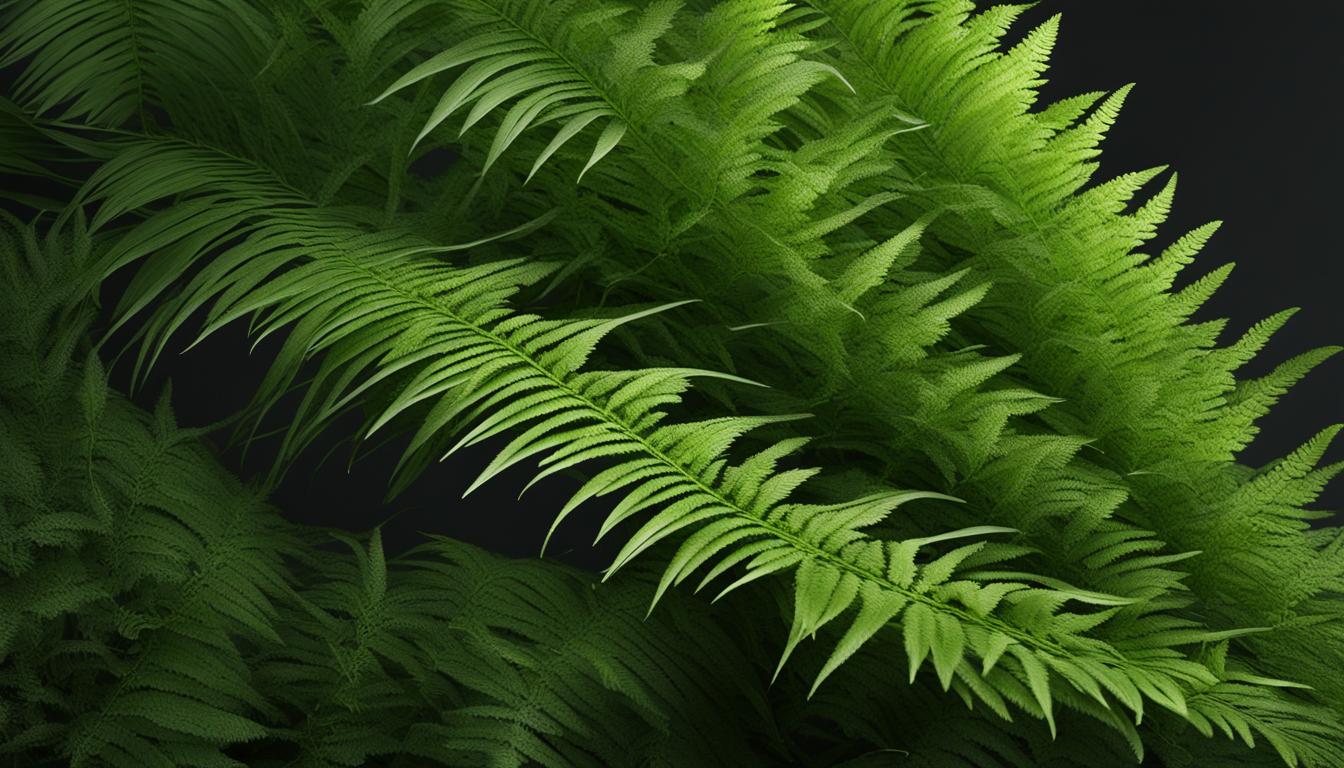
In addition to their visual appeal, foxtail ferns are also relatively low-maintenance plants. They are resistant to pests and diseases, and their fronds remain green and lush throughout the year. This makes them a great choice for beginner gardeners or those who want to add a touch of greenery to their indoor spaces without a lot of fuss.
Whether planted in a garden bed, hanging basket, or used as a focal point in a landscaping design, foxtail ferns are sure to make a statement. Their unique appearance and ability to thrive in various conditions make them a versatile and attractive option for any plant lover.
Ferns are a diverse and beautiful group of plants that add texture, color, and interest to gardens and indoor spaces. Whether you prefer tall and stately ostrich ferns, robust and bold macho ferns, or elegant and fast-growing lady ferns, there is a fern variety to suit every taste and space.
Indoor ferns like the lemon butter fern and Boston fern are perfect for bringing a touch of nature into your home, while outdoor ferns like the western sword fern and foxtail fern can transform your garden into a lush and vibrant oasis.
Regardless of the type of fern you choose, they all share a common need for shade, moisture, and proper care. By providing the right conditions, you can enjoy the unique beauty and charm of ferns for years to come. So why not enrich your surroundings with the timeless elegance of ferns and create a tranquil and inviting atmosphere?
After reading this, check out our other articles on:
- Popular Houseplants: 62 Varieties to Choose From
- Exploring Different Types of Foliage Plants – A Personal Guide
FAQ
What are some popular types of ferns?
Some popular types of ferns include the ostrich fern, macho fern, lemon butter fern, western sword fern, autumn fern, lady fern, Japanese painted fern, Boston fern, asparagus fern, and foxtail fern.
What are the unique characteristics of the ostrich fern?
The ostrich fern is characterized by its large, feathery fronds that resemble the plumes of an ostrich. It thrives in wet, shady environments and can reach heights of 4 to 6 feet.
How does the macho fern differ from other ferns?
The macho fern is known for its robust and bold appearance, with large, bright green fronds that can grow up to 4 feet long. It is well-suited for hot and humid climates and can be grown both outdoors and indoors.
What makes the lemon butter fern unique?
The lemon butter fern is compact and resilient, with fronds that have a lemony scent and bright green color. It is ideal for indoor spaces and can grow up to 12 inches tall.
What are the characteristics of the western sword fern?
The western sword fern has long, lush fronds that resemble blades. It is versatile, evergreen, and resistant to pests and diseases. It thrives in shady spots in woodland gardens and can reach heights of up to 4 feet.
What is special about the autumn fern?
The autumn fern is a deciduous fern known for its vibrant coppery-red fronds in the spring. It provides year-round interest as the fronds mature and turn green. It grows up to 24 inches tall and thrives in full shade.
What are the characteristics of the lady fern?
The lady fern is elegant and fast-growing, with lacy fronds and adaptability to various conditions. It can reach heights of up to 3 feet and thrives in partial to full shade. It is resistant to pests and diseases.
How is the Japanese painted fern unique?
The Japanese painted fern is striking and unique, with silvery fronds that have a frosted appearance. It is well-suited for shady spots and can reach heights of up to 18 inches. It requires consistent moisture and mild winters to thrive.
What are the care requirements for the Boston fern?
The Boston fern is a classic and popular choice for indoor ferns. It thrives in low-light environments, prefers partial shade, and requires regular watering and high humidity to thrive.
How does the asparagus fern differ from true ferns?
The asparagus fern is not a true fern but is often grouped with ferns due to its similar appearance. It is a versatile houseplant with bushy, lace-like foliage. It can reach heights of up to 3 feet, prefers partial shade, and requires regular watering and high humidity.
What makes the foxtail fern unique?
The foxtail fern is another non-true fern that is often included in fern collections. It has feathery fronds and can produce red berries in the fall. It is well-suited for outdoor gardens, prefers partial shade, and requires regular watering.

